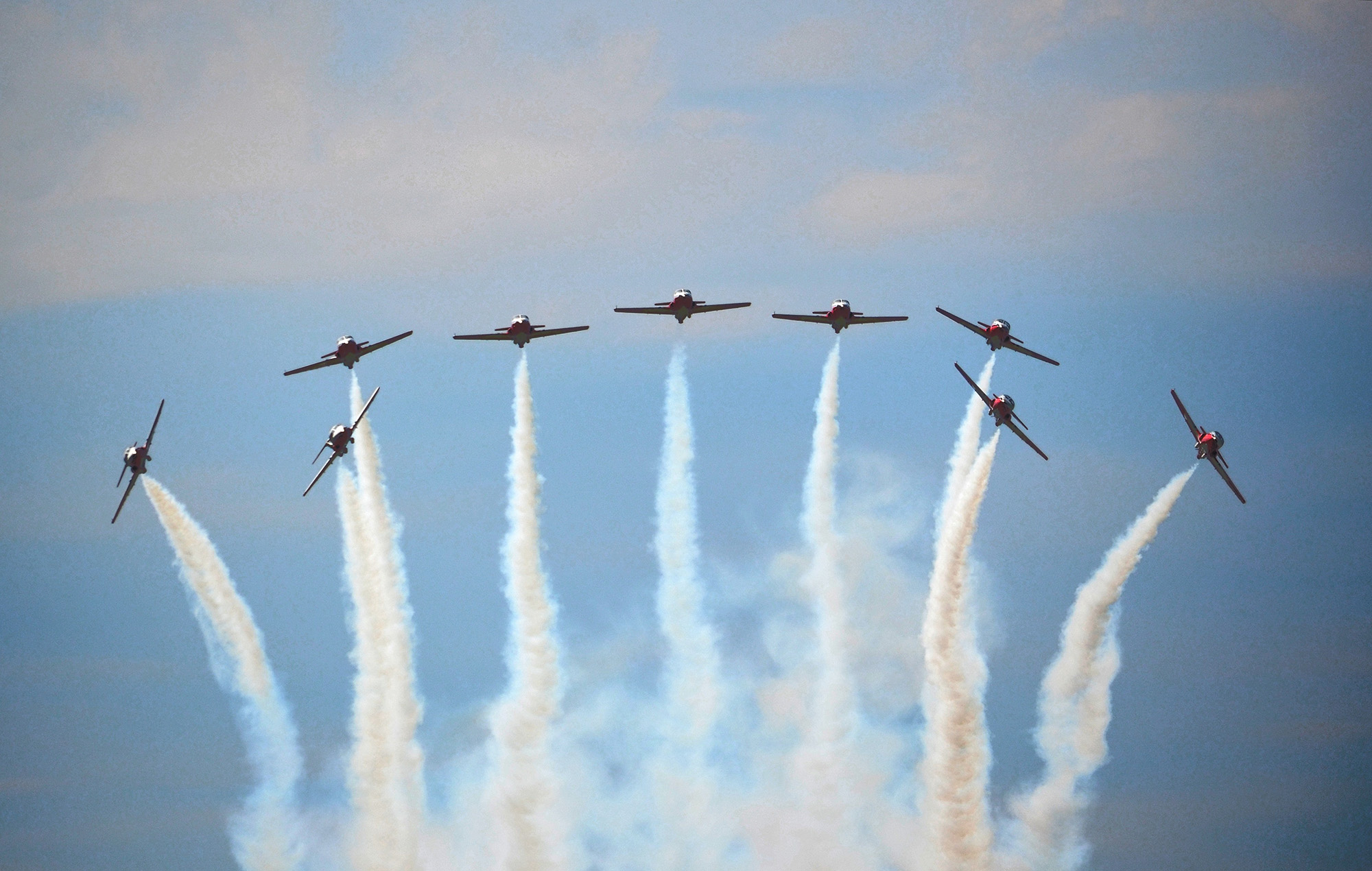
Westmoreland County Airshow in Latrobe by Bill Rigsby. Image courtesy of the Laurel Highlands Visitors Bureau.
By Brianna Horan, Manager of Tourism & Visitor Experience
 Exploring the Rivers of Steel National Heritage Area – Planes & Aviation!
Exploring the Rivers of Steel National Heritage Area – Planes & Aviation!
Surprising Contributions in Flight
As we explore our region’s legacies in transportation, it seems natural to focus on our the crisscrossed network of railroads or even the auto industry of the early 20th century. After all, those industries were intrinsically connected to the iron and steel that the Pittsburgh area was so famous for. For the third segment in the series. we delve into the somewhat surprising, but highly relevant, contributions that have been made in the field of aviation. From a pioneering female aviator to the heroic Tuskegee Airmen, pilots from Western Pennsylvania have left a proud legacy. Read on to learn more about these exemplars, the flights and fields that helped birth aviation here, the places you can visit and the experiences you can have—including a special event on August 25—to celebrate planes and aviation in the Rivers of Steel National Heritage Area.
But first, we have to share the story of the 1956 disappearance of one B-25 bomber that crashed into the Monongahela River…
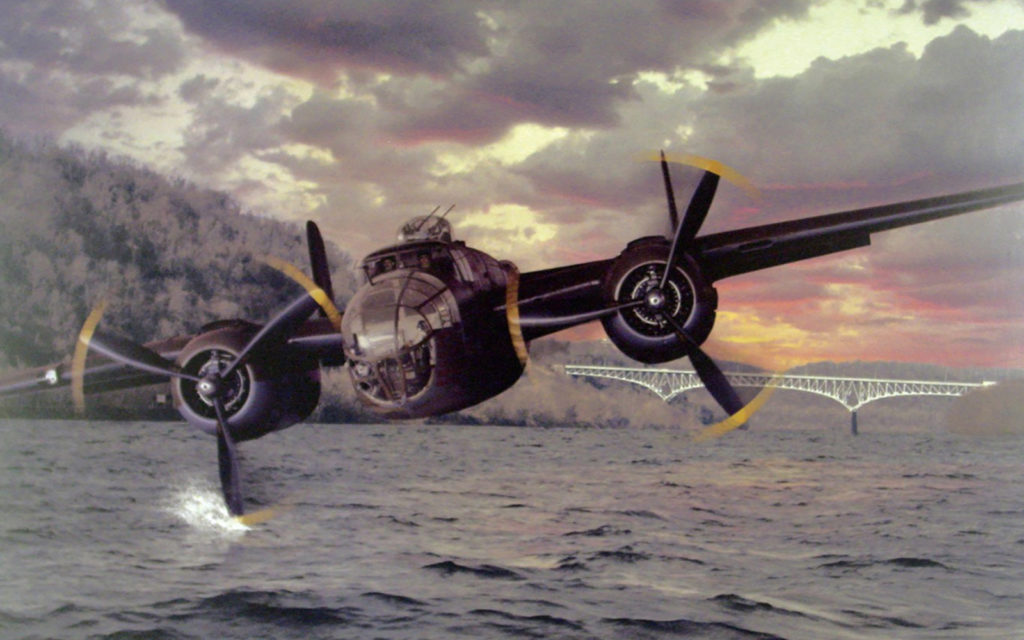
Illustration of the B-25 “Ghost Bomber” descending into the Monongahela River, Image courtesy of the B-25 Recovery Group.
The Enduring Mystery of the “Ghost Bomber”
One of the region’s most well-known aviation-related incidents is surrounded by what many consider to be mysterious circumstances. This much is agreed upon: Shortly after 4:00 p.m. on January 31, 1956, a B-25 Mitchell bomber with crew onboard fell out of the air, skimming low over what is now the Homestead Grays Bridge and splashing into the icy, 34-degree Monongahela River downstream of where Sandcastle Water Park in West Homestead is today. The men were on a routine training flight from an Air Force Base in Nevada to pick up a cargo of airplane parts at Olmstead Air Force Base in Harrisburg when it became clear they were quickly running out of fuel and had a malfunctioning engine. All six crew members survived the initial crash, but sadly two drowned while attempting to swim to shore. After the crash, a Coast Guard cutter caught the wing of the submerged plane with its anchor, but when the line slipped it was the last sign ever seen of the B-25 bomber. Official search efforts continued for two weeks with no luck finding the aircraft, and a number of additional attempts in the years since have also been fruitless.
This is where the questions arise—though there are many locals who swear they know exactly what happened. Some say they witnessed the military secretly recovering the plane’s wreckage in the dead of night to conceal its sensitive cargo, which is said to range from nuclear weapons to Soviet agents, or even a UFO from Area 51. (Remember, this was at the height of the Cold War.) Others contend that the aircraft’s aluminum body would have been eaten away decades ago by the polluted waters of the Mon, leaving only the steel engines and landing gear remaining. Some believe the craft was washed down the Mon to the Ohio River and may have landed somewhere around Emsworth. But if you ask the B-25 Recovery Group, who are determined to rescue the aircraft, it’s settled in a gravel pit near where it first sank, under 32 feet of water and 15 feet of silt. The Senator John Heinz History Center has a detailed account of the incident, including original newspaper clippings and official documents pertaining to the mystery of the “Ghost Bomber.”
Aviation Destinations in the Heritage Area
If you’re planning to hit the road on these itineraries during the global pandemic, please be mindful of the health and safety guidelines in place from the Commonwealth of Pennsylvania and the Centers for Disease Control and Prevention. Be sure to contact the sites, restaurants and attractions directly to confirm their operating statues and the safety protocols they have in place. We encourage you to bookmark these itineraries as travel inspiration to return to when things are less uncertain.

Image courtesy of Air Heritage, Inc.
Air Heritage Museum and Aircraft Restoration Facility
35 Piper St., Beaver Falls, PA 15010 | 724-843-2820 | airheritage.org
This working museum in Beaver Falls has a large collection of displays and ephemera that tell the rich history of flight, specializing in World War II and Vietnam era aircraft and artifacts. Members of the organization have repaired and restored numerous aircrafts over the past 30+ years, and visitors can see active restoration in progress in the large hangar.
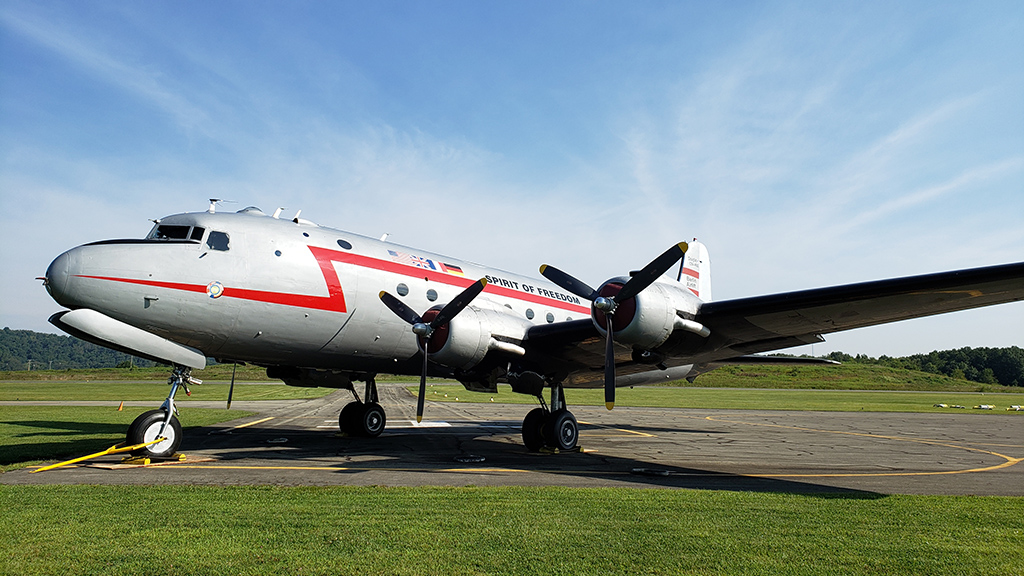
Spirit of Freedom, image courtesy of Visit Greene, the Greene County Tourist Promotion Agency.
Aviation Day in Greene County
417 E. Roy Furman Hwy., Waynesburg, PA 15370 | soarofgreenecounty.org
This annual two-day festival celebrates the history and thrill of flight every August at the Greene County Airport in Waynesburg. The historic Spirit of Freedom takes flight for a Candy Drop as a kid-friendly way to re-enact the Berlin Airlift, and children aged 8 to 17 can take a free Young Eagles flight. The event is presented by Support Our Aviation Resources (SOAR) of Greene County, which brings together aviation enthusiasts and professionals to support the community airport and inspire youth to embark on careers in flight. The 2020 Aviation Day has been cancelled due to the pandemic.
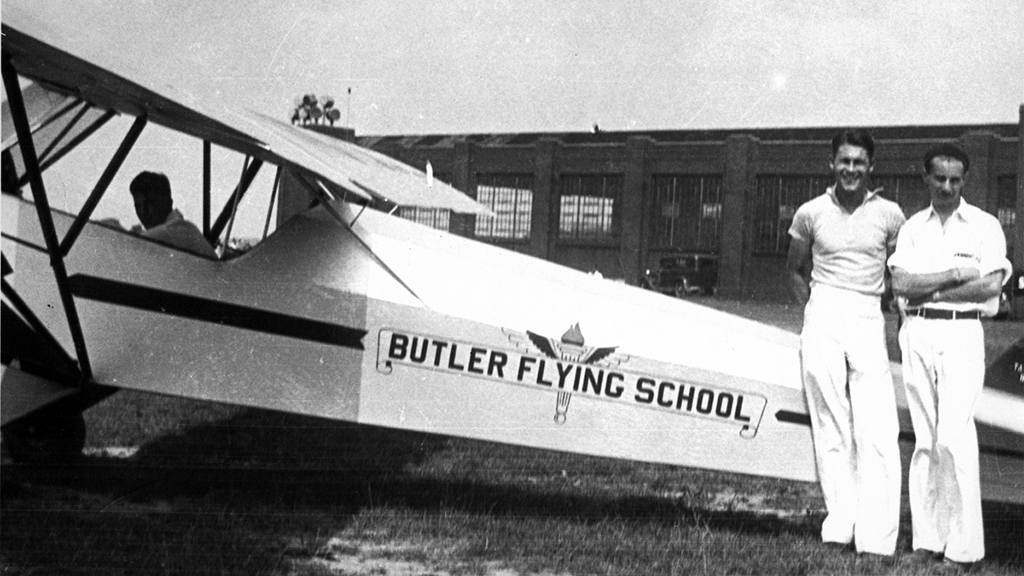
Butler Flying School, image courtesy of Butler County Tourism & Convention Bureau
High-Flying History and Dining at Butler County Airport
Serventi’s on the Runway, 473 Airport Rd., 2nd Flr., Butler, PA 16002 | 724-481-1213 | serventisontherunway.com
The flat spread of land that makes Butler County well-suited for agriculture also made it an ideal place for early pilots to land. In 1908, a member of the Wright Brothers’ Exhibition Team soared over Butler in a one-man dirigible from the current site of Butler High School to the Courthouse and back, completing the first flight in the county. By 1929, a 230-acre site made up of the former Nixon and Dodds Farm was officially opened as the Pittsburgh Butler Airport, which served as the primary airport for the Pittsburgh region until Pittsburgh International was built in the early 1950s. The Penn School of Aviation was originally housed here and was regarded as one of the most state-of-the-art air transport and mechanical schools in the nation. Amelia Earhart attended the airport’s dedication, and she returned in 1930 to train in Butler’s skies for three months to earn her instrument flight certificate prior to her flight across the Atlantic. She had long-range fuel tanks installed on her Lockheed Vega (dubbed the Little Red Bus) while in area. The 2015 Butler County Visitors Guide has a detailed timeline of the county’s aviation milestones. Read up and let history come alive as you settle in for a meal at Serventi’s on the Runway, which serves fine Italian cuisine overlooking the Butler County Airport. At dinnertime you can watch jets taking off against the setting sun.
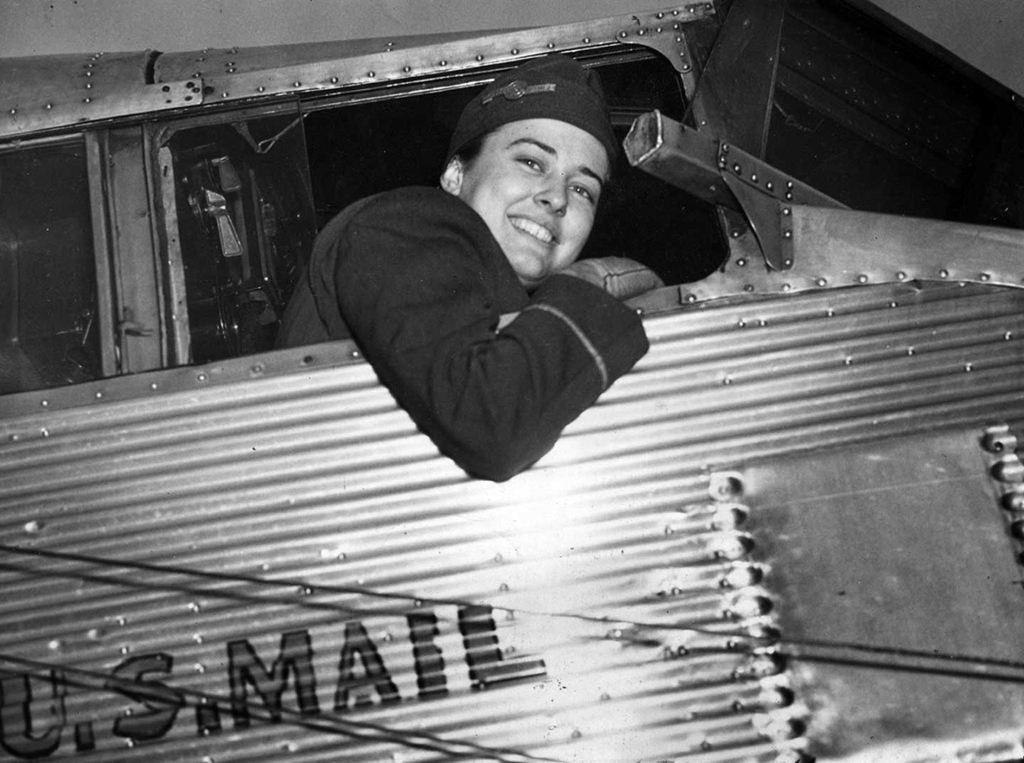
Helen Richey in a U.S. Mail Carrier, image courtesy of McKeesport Regional History & Heritage Center.
McKeesport Regional History & Heritage Center
1832 Arboretum D., McKeesport, PA 15132 | 412-678-1832 | mckeesportheritage.org
The collection of this museum is extensive, and includes an exhibit honoring McKeesport native Helen Richey, a pioneering female aviator who was started her flying career as a teenager out of high school. In 1929 at age 20, she became the first licensed female pilot in Allegheny County, and by 1932 she and Frances Marsalis set a new women’s endurance record, staying aloft for nearly ten days. She beat out eight men for the job when she was hired as the first female pilot for a commercial scheduled passenger carrier, Central Airlines, in 1934. She was forced to resign soon after, however, following a gross case of sex discrimination when male pilots threatened to strike if she stayed on – women wouldn’t become airline commercial pilots again until 1973. Later, Richey became the only female flight instructor for Army Air Corps cadets at Pittsburgh-Butler Airport. During World War II, she ferried combat aircraft around England as a member of the British Air Transport Auxiliary. Take a look at McKeesport Regional History & Heritage Center’s webpage dedicated to Richey to see vintage video footage of her in a Universal Newsreel titled “Lady Mail Pilot.” Pittsburgh International Airport’s Blue Sky News blog also recently wrote about Richey as the Amelia Earhart of Pittsburgh.
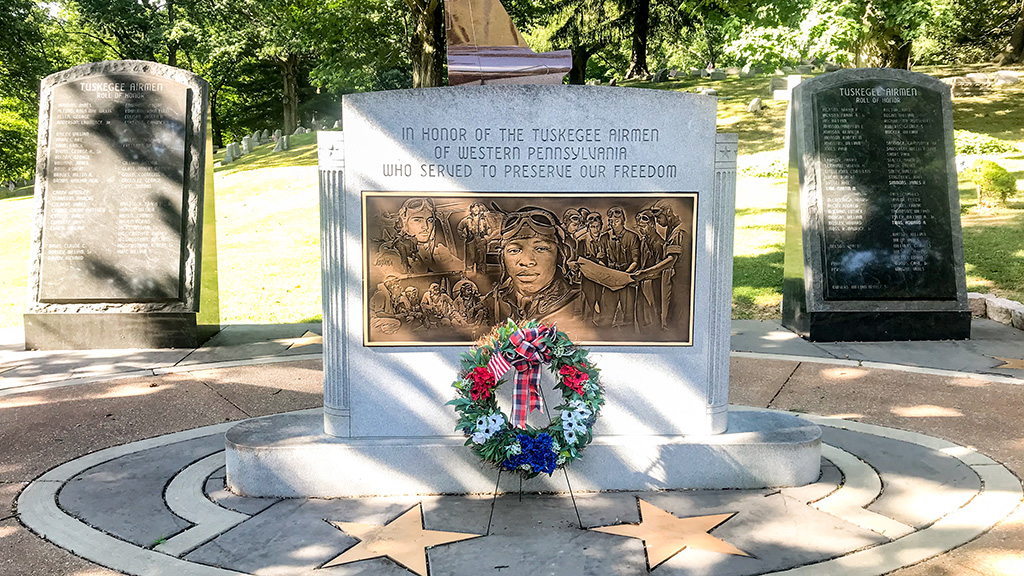
Tuskegee Airmen Memorial of Greater Pittsburgh
Tuskegee Airmen Memorial of Greater Pittsburgh
501 Hopkins St., Sewickley, PA 15143 | 412-741-4409 | sewickleycemetery.com/the-tuskegee-airmen-memorial/
The Sewickley Cemetery is home to the largest outdoor memorial to Tuskegee Airmen in the country. Ninety of these legendary first Black military airmen were from western Pennsylvania—the largest contingent involved in the Tuskegee experience. The memorial is one of the first displays on the road into the cemetery, with four handsome granite monuments, an honor roll of local Tuskegee Airmen, and an airplane tail sculpted from red granite inspired by the Tuskegee unit’s nickname, the “Red Tails.” Like most things in the United States, the U.S. Armed Forces were segregated in the leadup to World War II. Racist beliefs that Black people couldn’t learn to fly aircraft prevented African-American men from joining the newly expanded civilian pilot training programs to prepare the country for war, until 1940 when President Franklin D. Roosevelt listened to the lobbying campaigns of the NAACP and Black newspapers like the Pittsburgh Courier and announced a new training program for Black pilots. Nearly 1,000 African-American and Caribbean-born airmen volunteered to train at the Tuskegee Army Air Field in Alabama, flying more than 15,000 individual sorties in Europe and North Africa during World War II. The Tuskegee Airmen’s impressive performance—they are especially known for their protection record, having lost only 27 of the 179 bombers they escorted, compared to an average of 46 among other units—earned them more than 150 Distinguished Flying Crosses. This heroism and excellence helped to encourage President Harry Truman to desegregate the U.S. Armed Forces and mandate equality of opportunity and treatment in 1948, three years after the end of the war. In 2007, 350 Tuskegee Airmen and their widows received the Congressional Gold Medal. WQED produced a documentary called Fly Boys: Western Pennsylvania’s Tuskegee Airmen, featuring the stories of more than 40 aviators from the region.
Pittsburgh International Airport
The Pittsburgh International Airport also honors the legacy of local Tuskegee Airmen, with a museum-quality photographic display in Concourse A, which can be seen by non-travelers who get a myPITpass at the third-floor ticket counter. This memorial and the display at Sewickley Cemetery were both created by Regis Bobonis Sr., a retired Pittsburgh journalist and amateur historian who was inspired to pay tribute to Tuskegee Airmen from the region after meeting with dozens of them in a quest to capture their stories. Pittsburgh International Airport’s Blue Sky PIT blog has more information about the memorials, and how to view them.
Special Event at the Tull Family Theater
Tull Family Theater, 418 Walnut St., Sewickley, PA 15143 | 412-259-8542
On Tuesday, August 25, 2020, Chauncey Spencer’s traveling museum dedicated to the Tuskegee Airmen will be parked in front of the Tull Family Theater in Sewickley from 10 a.m. to 6 p.m. The Tull Family theater will also host two free showings of a 30-minute documentary, Tuskegee Airmen: Fight and Flight, at 2 p.m. and 6:30 p.m. Spencer is taking his museum on a cross-country tour from Chicago to Washington, D.C., to honor his father, Chauncey Spencer Sr., who flew a plane with Dale White in 1939 between the same two cities to convince Congress that African Americans had a place in aviation. What became known as the “Goodwill Flight” did include a stop in Pittsburgh, where they were forced to land in the dark after they were refused arrival at Morgantown’s airport. After landing safely in Pittsburgh, they were grounded the next day by the Civil Aeronautics Authority—ensuing legal proceedings drew Robert Lee Vann, an attorney and then publisher and editor of the Pittsburgh Courier, to come to their legal defense. Spencer Sr. and Dale’s flight convinced Congress to allow Black people to be included in the pre-WWII Civilian Pilot Training Program in Tuskegee. This article in the Pittsburgh Tribune-Review has more details about the traveling museum, and the Tull Family Theater website has information about the documentaries.
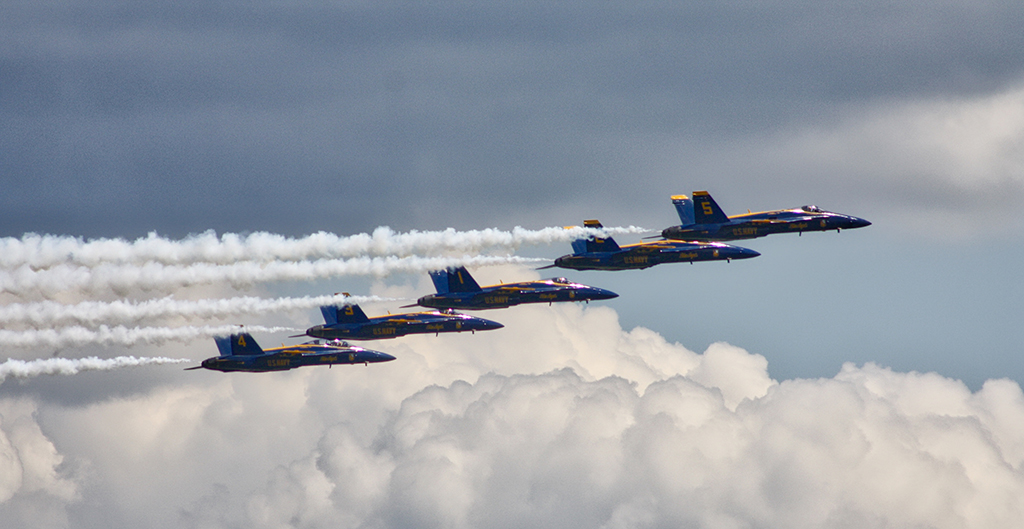
Westmoreland County Airshow by Denise Eidemiller. Image courtesy of the Laurel Highlands Visitors Bureau.
Westmoreland County International Airshow
148 Aviation Ln., Latrobe, PA 15650 | 724-539-8100 | palmerairport.com
The Arnold Palmer Regional Airport usually hosts a two-day airshow each May, often featuring the Navy Blue Angels, who are slated to perform at the 2021 event. Daredevils and fighter jets entertain the crowd with stunts and narrated re-enactments of war missions. Attendees can step onboard static aircraft to peak into the cockpit. The Westmoreland County International Airshow is on hiatus in 2020.
If you missed them, be sure check out the Automobiles and Roadways itineraries, part one and part two, as well as the Trains and Tracks itinerary.
Stay tuned for more itineraries through the Rivers of Steel National Heritage Area, as we continue to explore the region through the lens of transportation.

 Exploring the Rivers of Steel National Heritage Area – Planes & Aviation!
Exploring the Rivers of Steel National Heritage Area – Planes & Aviation!





